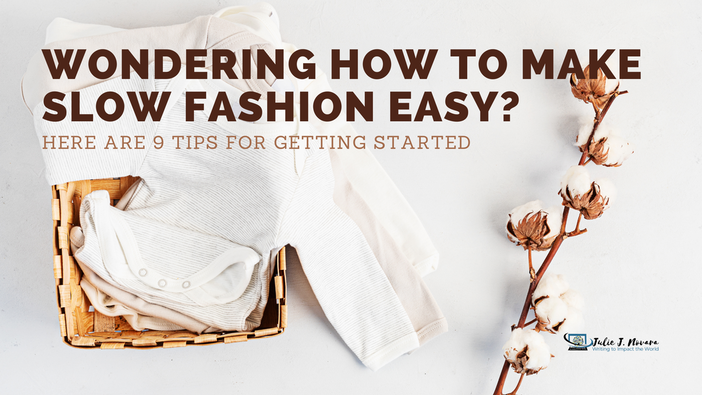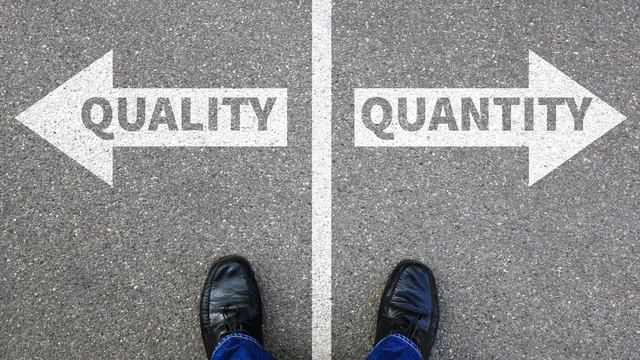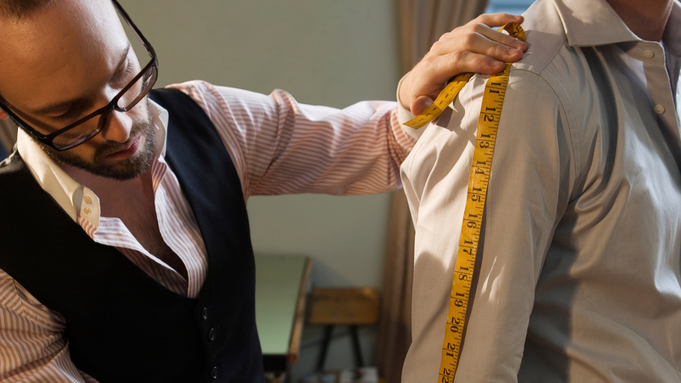Wondering How To Make Slow Fashion Easy? Here Are 9 Tips for Getting StartedThe movement toward slow fashion is a trend for sustainable living among those who care about the environment and believe in the message of the natural clothing movement. It's geared toward the modern consumer who wants to live a more eco-friendly lifestyle and is an idea that's started catching on. What Is Slow Fashion?Slow fashion is a movement that encourages sustainable, ethical, and environmentally conscious practices when it comes to the apparel industry. It encourages buying less and buying better-quality pieces that will last longer. It also aims to create transparency in the fashion supply chain so consumers can better understand where their clothes come from and how they're made. Slow fashion encourages individuals to buy less, but buy better. It's about choosing quality over quantity, and investing in pieces that will last. Slow fashion is the antithesis of fast fashion — think exact opposite. While fast fashion is based on the idea of buying clothes as cheaply as possible and then replacing them as soon as they wear out, slow fashion encourages environmentally responsible shoppers to buy fewer but better-quality pieces. Slow fashion is about sustainability and ethical labor practices. It's about choosing clothes that are made from sustainable materials, that can be repaired and reused, and that will last for years. It's also about ethics. Choosing clothes that have been made ethically, without using child labor or sweatshops. Something we may not as readily connect with slow fashion is community. But it's really all about connecting with others who share your values and about supporting local artisans and craftspeople. Slow fashion centers on transparent supply chains where the end buyer knows the farmer who's at the beginning of the supply chain. The transparency builds up the local community with circularity at its core. Why Is Slow Fashion Important?Slow fashion is important because it supports sustainable practices. By buying less, but buying better, you're reducing the amount of waste produced by the fashion industry. Did you know... The world now consumes about 80 billion new pieces of clothing every year," says Livia Firth of Eco-Age. "This is 400% more than the amount we consumed just two decades ago. As new clothing comes into our lives, we also discard it at a shocking pace. The average American now generates 82 pounds of textile waste each year." In the fast fashion industry, clothing corporations often design and produce apparel quickly and inexpensively, with the goal of selling it at a low price. However, this often leads to poor-quality clothing that doesn't last long and creates a lot of waste. Slow fashion, on the other hand, aims to change this unsustainable system by creating high-quality clothing that's made to last. It's about taking the time to design and produce clothes thoughtfully, using sustainable materials, and selling them at a fair price. Slow fashion is important because it promotes sustainability, quality, and ethics in the fashion industry. By having the conversation and encouraging other individuals to buy fewer (but better-quality!) clothes, we also help to reduce the amount of waste produced by the fashion industry. How Did Slow Fashion Begin?Slow fashion is a movement that started taking hold in the early 21st century as a reaction to the negative environmental and social effects of the fast fashion industry. Remember, fast fashion is a type of clothing production that relies on short lead times and quick turnaround times in order to keep up with changing fashion trends. As we've already mentioned, this type of production results in large amounts of waste. It also leads to labor violations and other social and environmental problems. The slow fashion movement was spearheaded by a number of fashion bloggers and designers who were concerned about all the negative impacts of fast fashion — both on the environment and on the garment workers who make our clothes. Slow fashion is based on the principles of sustainability, ethical manufacturing, and quality over quantity. Advocates of slow fashion encourage the use of natural materials, sustainable production methods, and fair labor practices. They advocate for prolonging the life of clothing items with repairs and alterations rather than discarding them when they become out of fashion. What Are the Characteristics of a Slow Fashion Brand?Again, slow fashion is a movement that aims to produce and promote clothing and accessories made with sustainable, ethical, and environmentally-friendly practices. The goal of the slow fashion movement is to reduce the negative environmental impact of the fashion industry, while also promoting the use of natural materials, sustainable production methods, and ethical labor practices. Slow fashion brands typically have the following characteristics:
How Did Slow Fashion Become a Movement?In the early 2000s in response to the consumption overkill and waste generated by the fast fashion industry, a group of fashion designers, bloggers, and consumers started to promote the idea of buying clothes to last longer. They encouraged shoppers to become environmentally responsible and buy clothes made from high-quality materials that could be worn and repaired multiple times. Slow fashion is not just about buying less clothing, by the way. It's also about making sure the clothes we do buy are made ethically and sustainably. The slow fashion movement advocates for the use of sustainable materials, such as organic cotton, hemp, and bamboo, and for the promotion of fair labor practices. It's become a movement because buyers are increasingly interested in the environmental and social impacts of the clothing they buy. They want to know that the clothes they wear were made in a way that doesn't harm the environment or the people who made them. How To Join the Slow Fashion MovementThere are many ways that individuals like you can join the slow fashion movement. Some may choose to only buy clothes from sustainable or ethical fashion brands, while others may choose to learn more about the production process of their clothes and try to buy clothing that is made locally. There are also many ways to get involved in the movement beyond just buying clothes, such as volunteering or donating time or money to organizations that support slow fashion. Slow fashion is not a one-size-fits-all approach, so there's no single way to join the movement. The important thing is that you find a way that works for you and that you're passionate about. Many different resources are available to help shoppers learn more about slow fashion and how they can get involved. The best way to start is by researching and finding the resources that are best suited to your individual needs and interests. Some of the most common ways to get involved in the slow fashion movement include:
Making Slow Fashion EasyHere are a few key ways to make slow fashion easy, no matter what your lifestyle: 1. Buy less. The goal of slow fashion is to buy fewer, better-made pieces that last longer. Buying less means you have less to keep track of and less to worry about. It also helps you focus on the pieces you own and get the most wear out of them. Here are a few key ways to buy less:
2. Choose quality over quantity. Not all fabrics are created equal. When shopping for clothes, look for fabrics that are high in quality. They may cost a bit more, but they’ll last much longer. This is the most important rule of slow fashion. When you buy fewer, high-quality pieces, not only will they last longer — you'll also want to wear them longer! So...
Remember, slow fashion is not about buying more. It's about buying better. So, take your time when shopping and be intentional about investing in pieces that will last. 3. Shop secondhand. Secondhand shops are a great place for environmentally conscious consumers to find high-quality clothes without spending a lot of money. Here are some tips for intentional shopping at consignment and other secondhand shops.
4. Invest in classic pieces. Instead of buying a bunch of trendy pieces that will go out of style in a few months, seek out the classics you'll be able to wear for years.
5. Find a tailor. Finding a good tailor can make all the difference when you're looking to adopt a more sustainable, slow fashion lifestyle. Tailors can help you get the most out of your clothes, whether it’s by hemming them to fit better or taking in or letting out seams to create a more comfortable fit. They can also help you repair damaged clothes instead of throwing them away. If you don’t have a tailor already, it’s worth looking for one in your area. Ask your friends for recommendations or search for local tailors on Google or Yelp. Once you’ve found a tailor you trust, be sure to reach out when you need to make any alterations to your clothes. 6. Repurpose clothes. Have you ever sat down to think about how many ways you can repurpose clothes? You can cut them up and make them into new items, dye them, or add embellishments. You can also use them as is. You don't have to be a fashion expert to be creative with your wardrobe. Here are a few ideas to get you started:
7. Take care of your clothes. A little bit of TLC can go a long way in extending the life of your clothes.
8. Make your own clothes. Making your own clothes is a great way to express your personal style, and it can be a lot cheaper than buying clothes from stores. Here are a few tips for making your own clothes:
9. Think before you buy.
Before you add a new piece to your wardrobe, ask yourself if you really need it. If the answer is yes, then consider being environmentally responsible and buying something that's well-made and will last. If the answer is no, then don't buy it. Also ask yourself if the new piece you want is something you'll wear often. Will it last long? Is it something you can afford? If the answer to these questions is no, then don't buy it. If you're a slow fashion brand, looking for ways to better tell your brand story, reach out. Julie J. Novara is a copy and content writer for small businesses making a big difference.
0 Comments
Your comment will be posted after it is approved.
Leave a Reply. |
Julie J. NovaraJulie's a copy and content writer for small businesses making a big difference! Archives
August 2022
Categories
All
|
|
© 2024, Julie Johnson Writing Services PO Box 616 Alamance, NC 27201 (336) 539-1655 ALL RIGHTS RESERVED. |













 RSS Feed
RSS Feed
